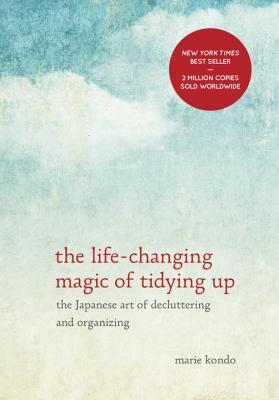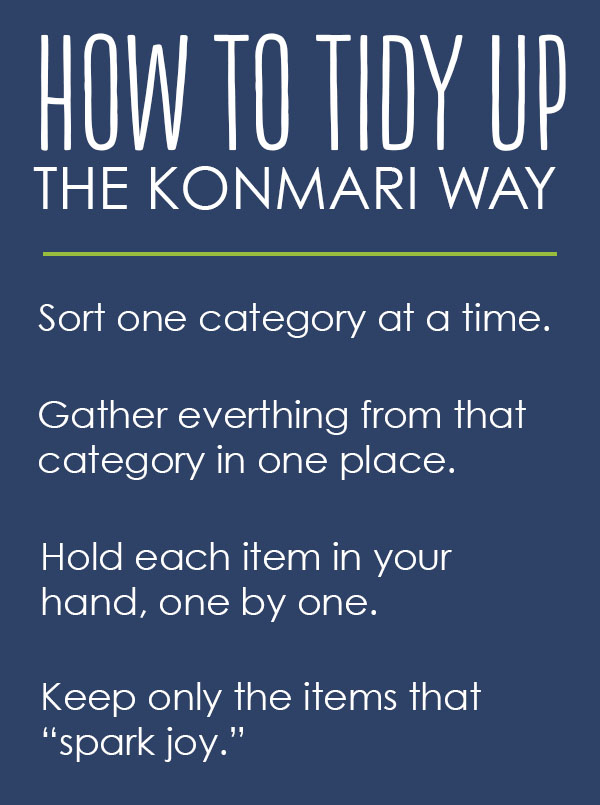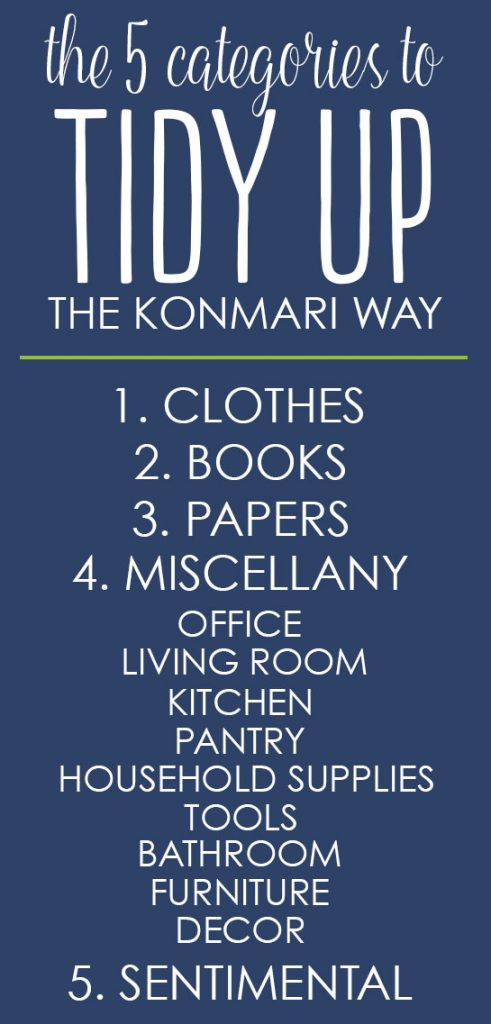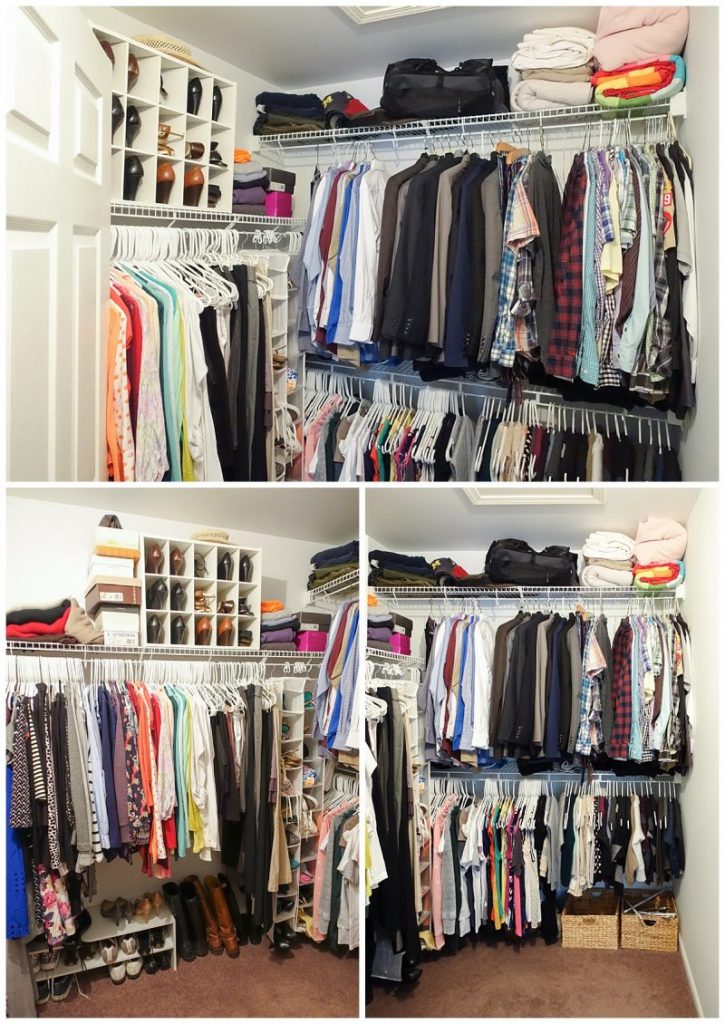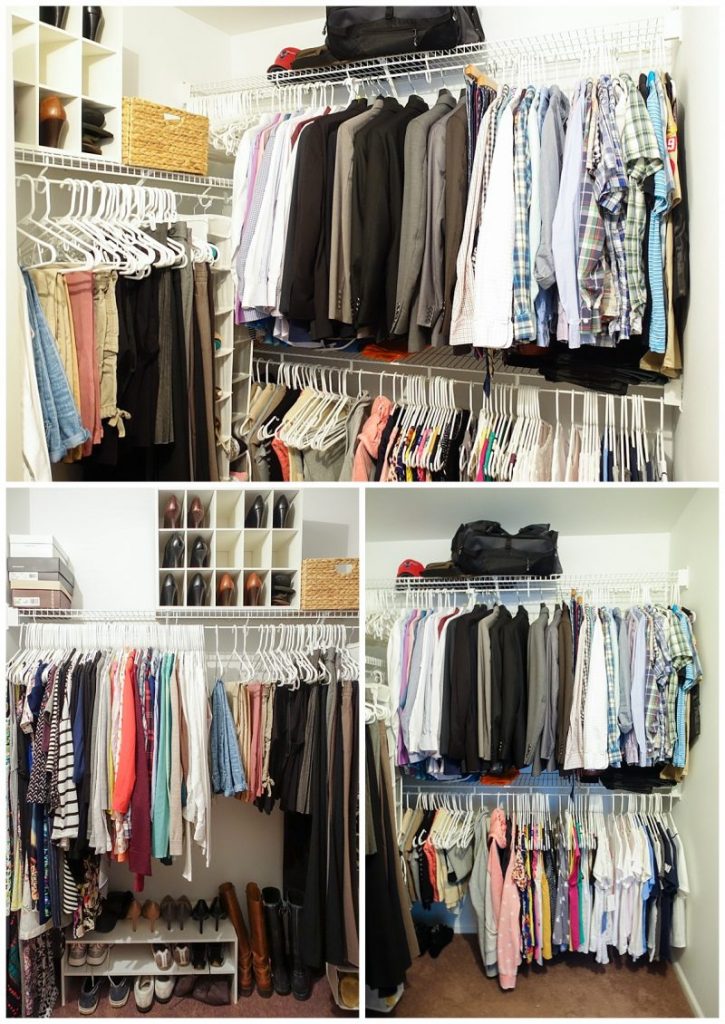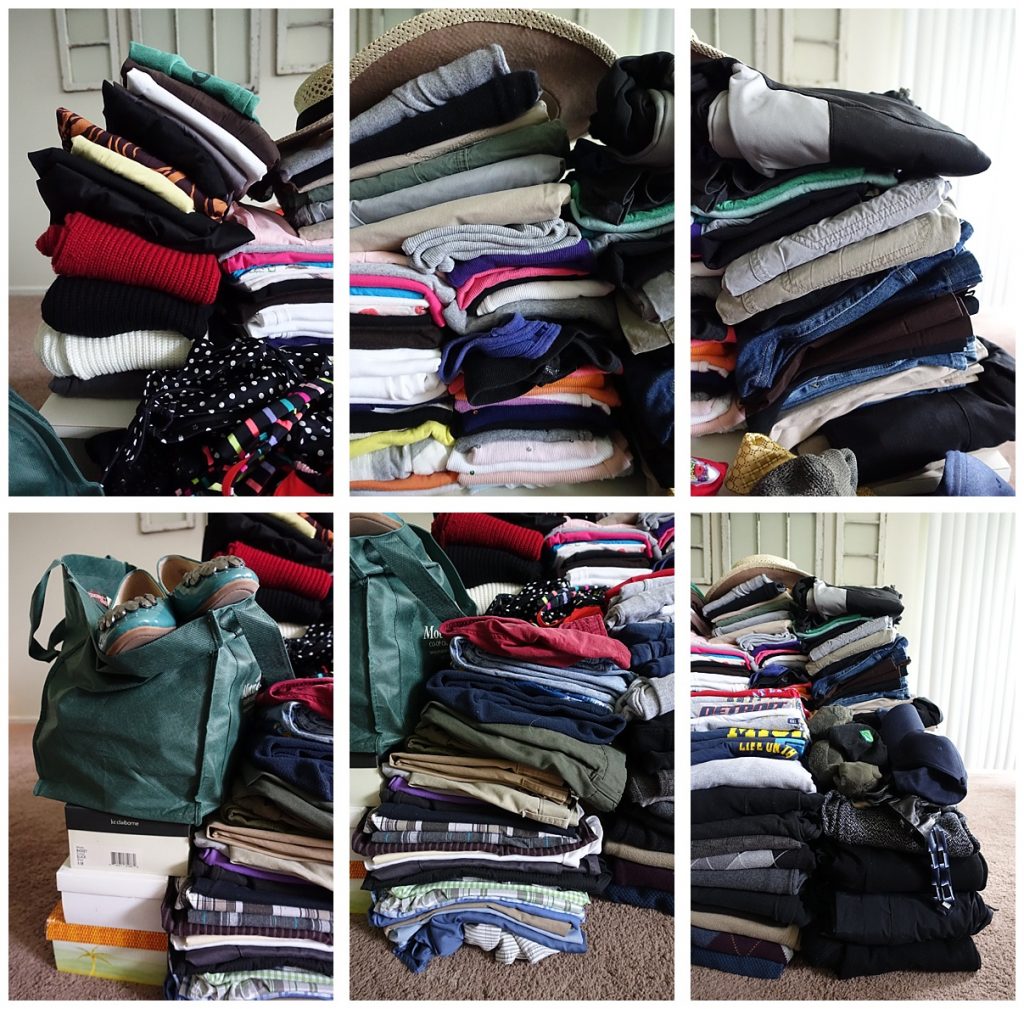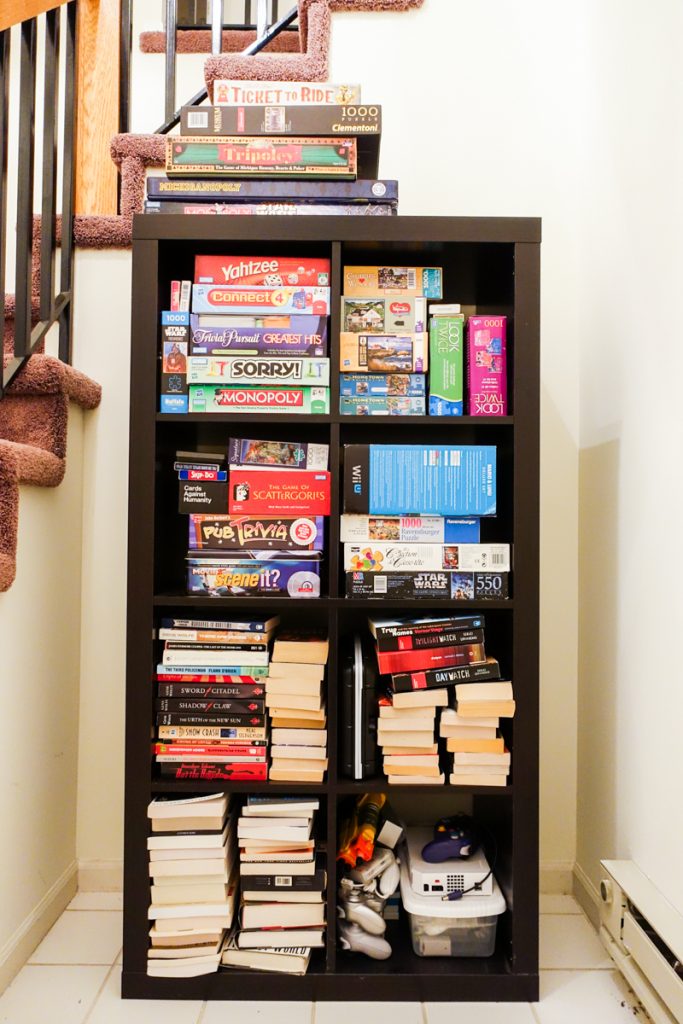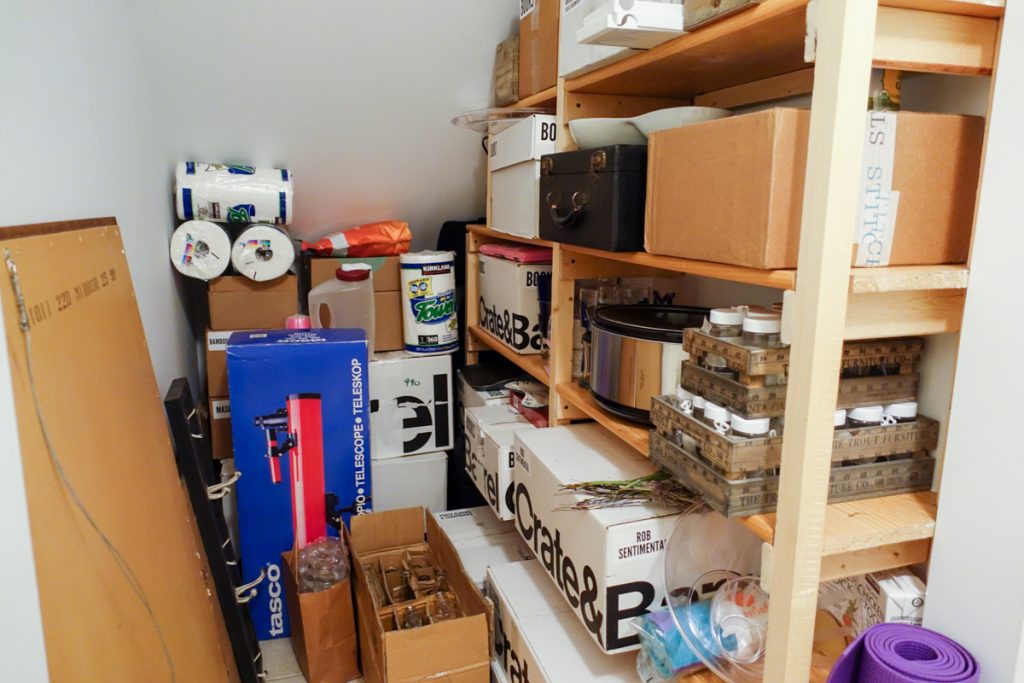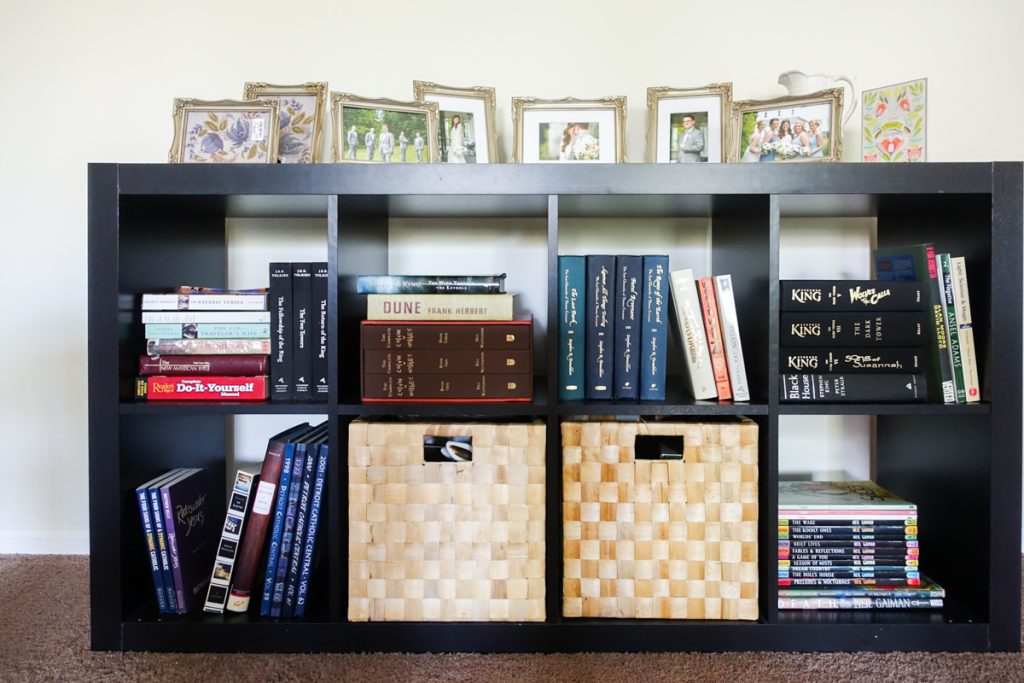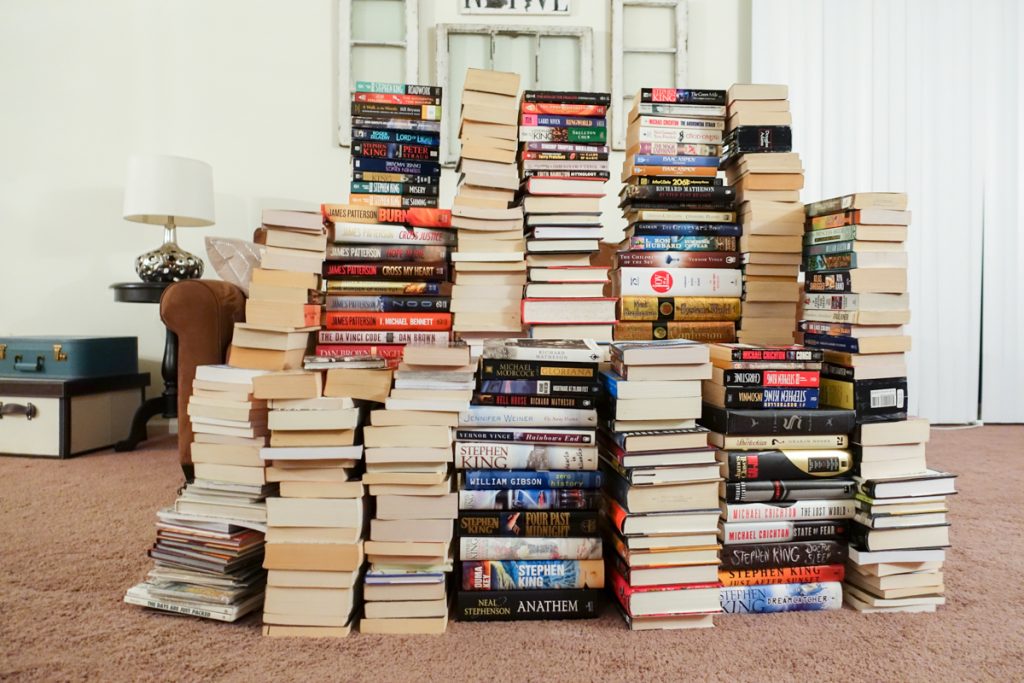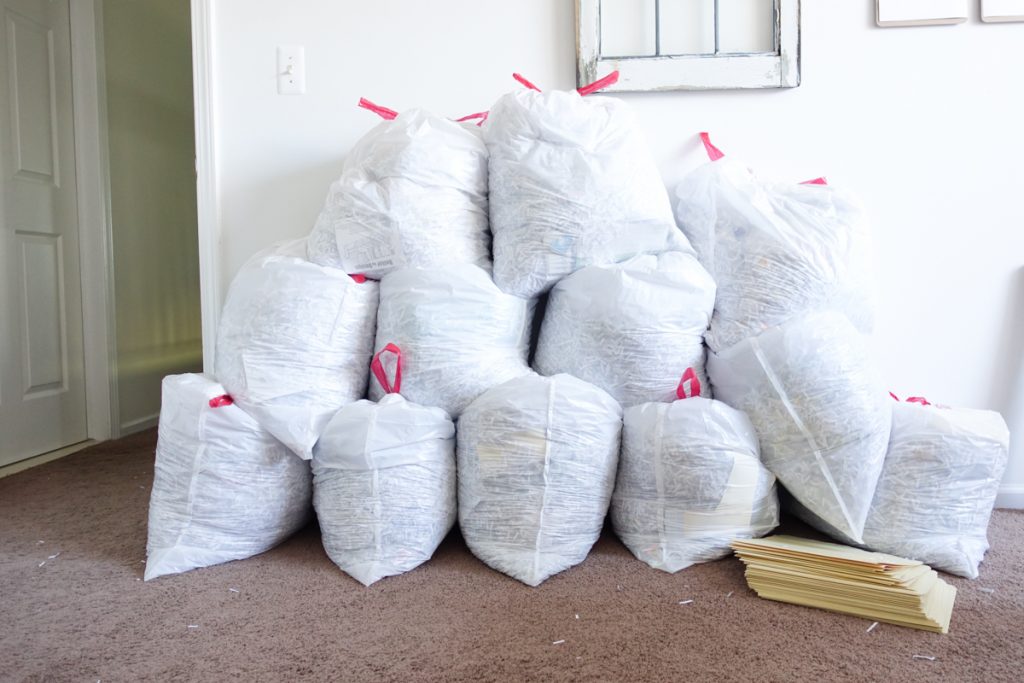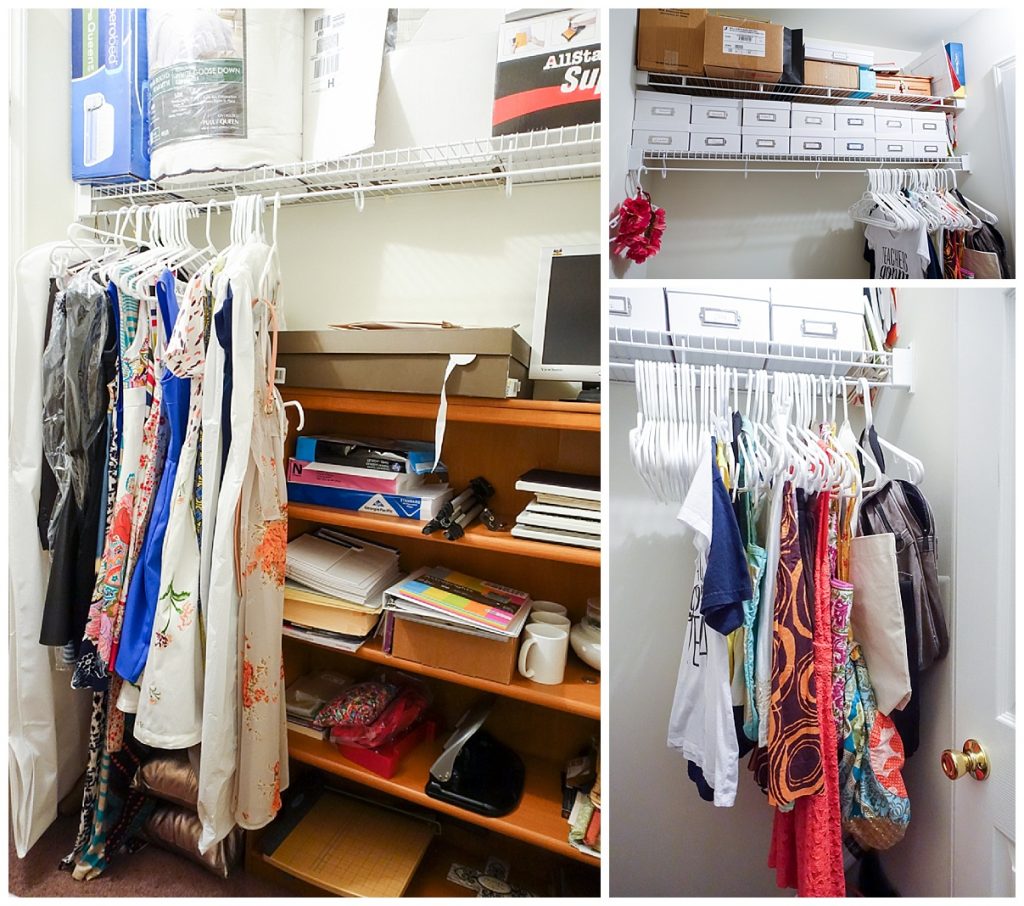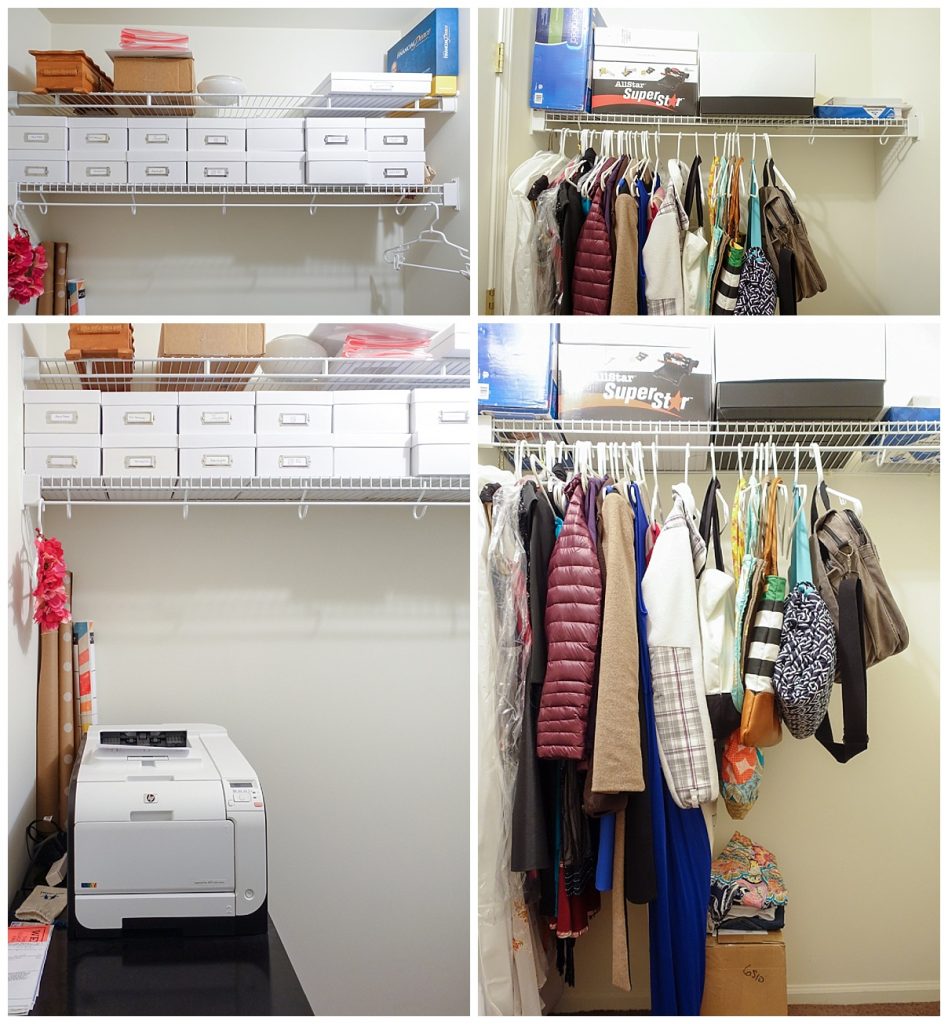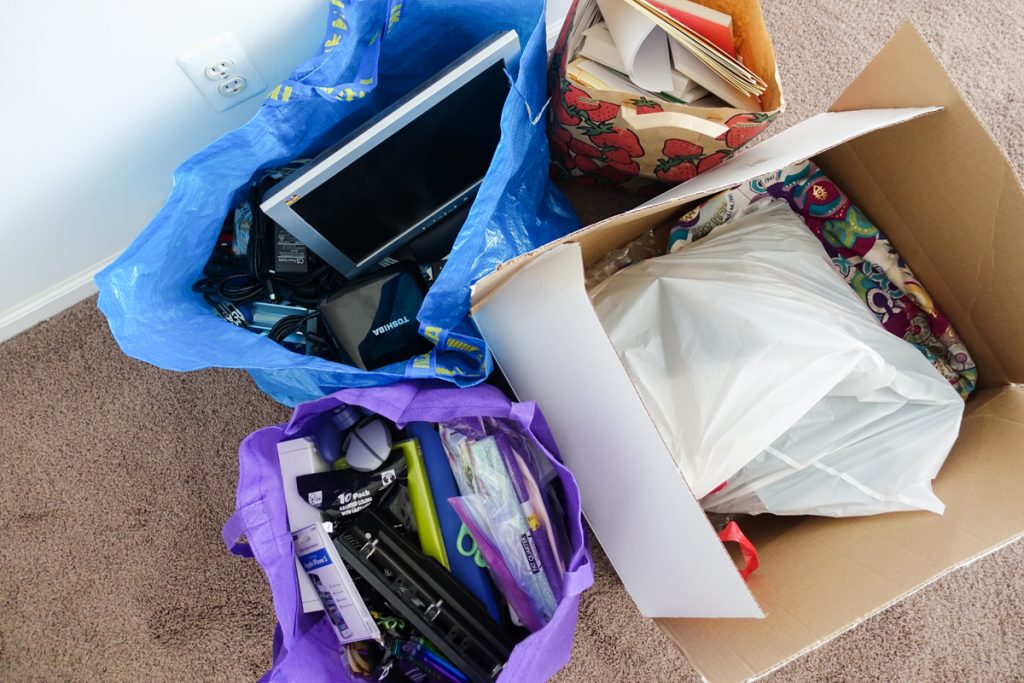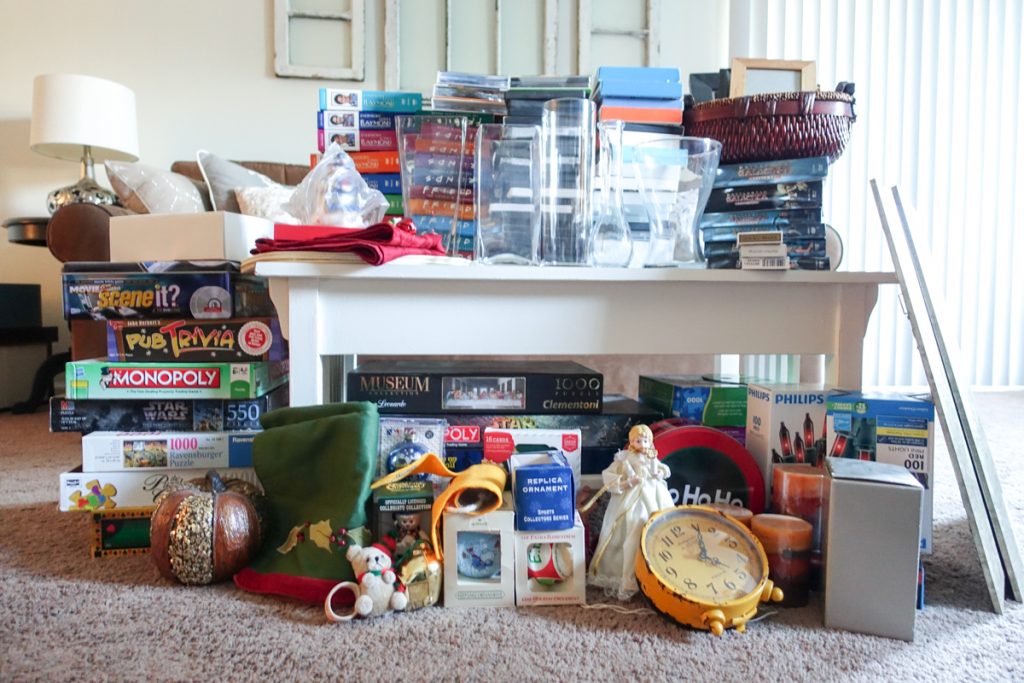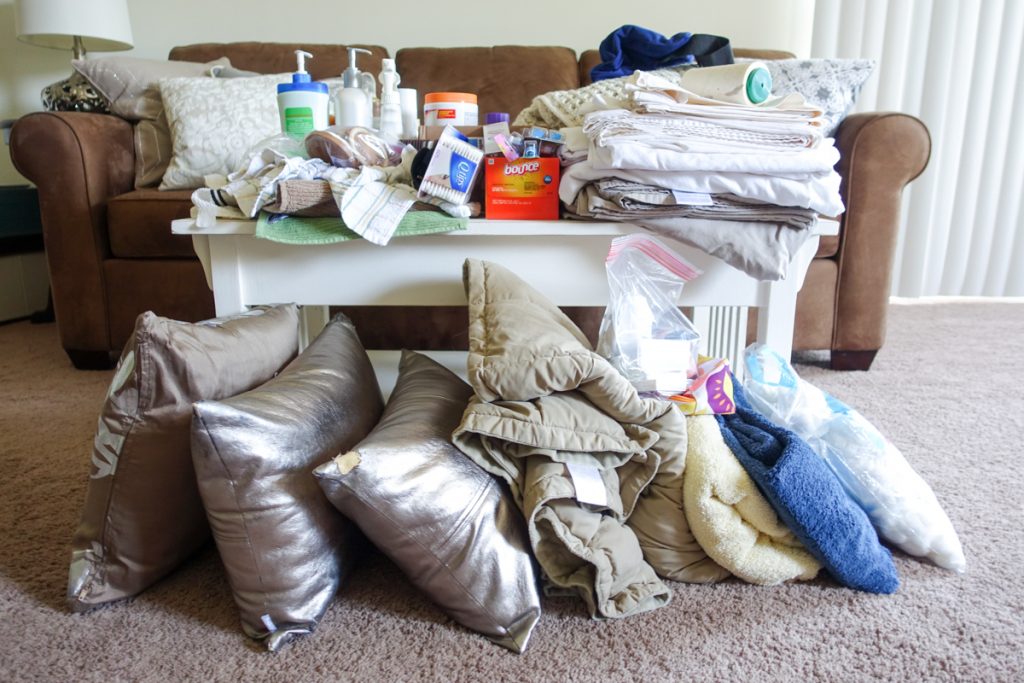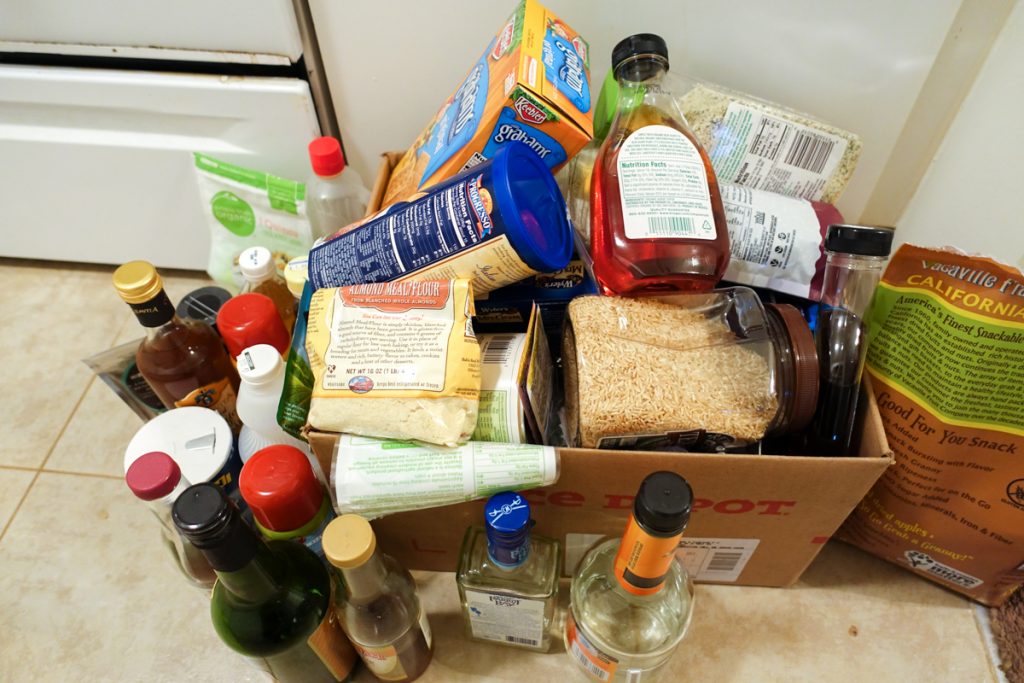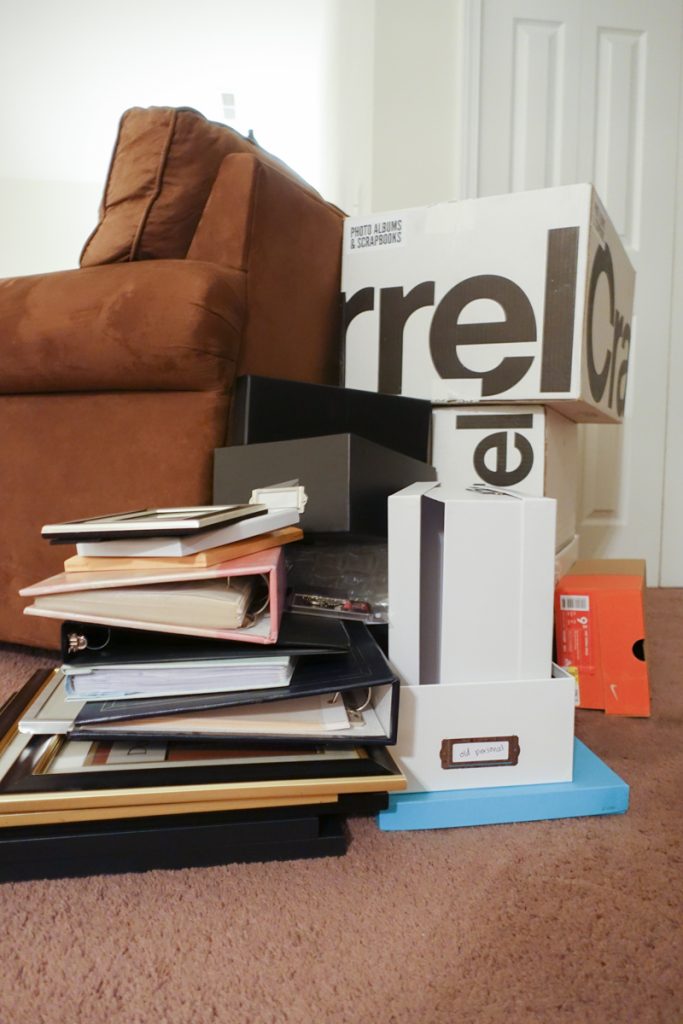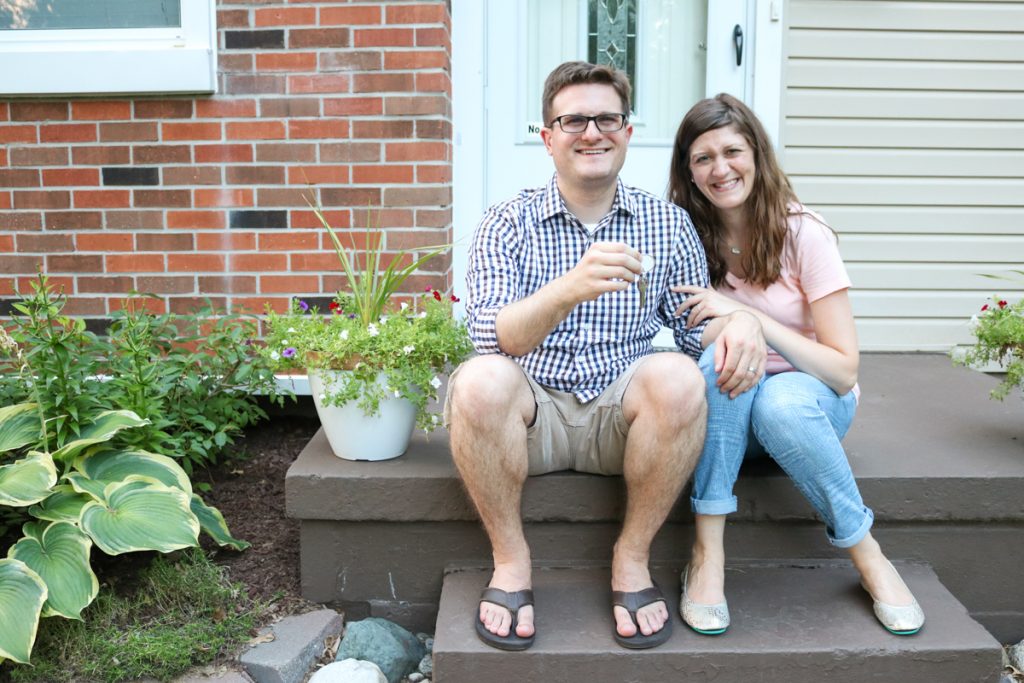So, as you may have seen already, we’ve moved! We are now in a cute little house in Royal Oak, a really happenin’ area of metro Detroit. However, the emphasis there should be on the word “little.” The live-able area of our house is about 950 square feet (about 60 square feet smaller than my first house, even), and it is certainly smaller than our 1,300 square feet condo.
With the upcoming move, we were a little worried about how we would store all of our stuff in a significantly smaller living space. Thanks to our friend Kristy’s recommendation, we were able to fit it all into our new house. What did she recommend? Just a little (but wildly popular) book by Marie Kondo called The Life-Changing Magic of Tidying Up.
This post contains affiliate links. We receive a small commission each time someone make a purchase through one of our links, which helps to support the blog. Thank you so much for stopping by today. We hope you enjoy the post!
We didn’t think we had that much stuff. I mean, it was only a little over a year ago that we rented the condo and donated a TON of items (to the tune of about $3,500 in tax write-offs) to Salvation Army and other local charities. And we made frequent trips to Salvation Army throughout our time in the condo. Surely after getting rid of all that crap, we didn’t have much more left. Wow, were we wrong.
We listened to The Life-Changing Magic of Tidying Up in the car on our trip out to Saugatuck and took the decluttering plunge when we got home. After our move, we thank God every day that we listened to this book. It was a life-saver. We donated, sold or threw away so much stuff that we didn’t need anymore, saved the hassle of unnecessarily moving unneeded belongings, and were spared from the stress of trying to fit it into our little house.
Just a word of caution before you head out and buy her book: Marie Kondo is a bit … different. Like, she thinks your socks need to rest and recoup their energy after supporting your feet all day. And that tidying has physical health benefits. Maybe you will agree with her. I try to keep an open mind, but I haven’t noticed any positive changes to my health.
I may not believe in the spiritual implications of tidying up, but I am a practical guy and The Life-Changing Magic of Tidying Up is FILLED with useful, practical advice.
The KonMari Method for Tidying Up
The KonMari method (named after Marie Kondo) is pretty straightforward and simple, which makes it so great.
You only sort through one category of items at a time (such as clothes, books, papers, etc.). If you have too much in a category to do in one day, you can break it down into subcategories to tackle it in bite-size chunks, such as tops, bottoms, socks, etc., for clothing. Start with the easy categories (clothing and books), then move on to papers and miscellaneous (everything else), as you work your way to sentimental items (which are the hardest).
When you begin sorting a category of belongings, you need to be thorough and round up every single item in your house that belongs to that category. Bring all of the items into one central location. Leave no stone unturned.
Then, it’s time to sort.
As you sort, you are not trying to find the things you don’t want anymore. Instead, Marie Kondo flips that question around. As she puts it, you are supposed to take each and every individual item, hold it in your hands, and ask yourself if that item “sparks joy” in you. If it sparks joy, keep it. If it doesn’t spark joy, don’t keep it. When you have finished your sort, you will be left with a pile of belongings that you really and truly love. Anything that is not loved (i.e. doesn’t “spark joy”) should be donated or discarded.
I preferred to think of her approach in terms that made more sense to me: as you look at an item, assume you are getting rid of that item unless you really want to keep it. I mean, it’s hard for your bank statements to spark joy, but you may want to keep your most recent one.
With all that in mind, Maria and I plunged ahead on our tidying journey. We thought it would be a piece of cake since we’d already donated and thrown away a ton of stuff last year. We were wrong.
Sorting Our Stuff on Category at a Time
Marie Kondo breaks everything into five categories. You’ll go one category at a time through the sorting process until you’ve finally sorted through all of your possessions. The 4th category (which Marie calls “komono”) is basically a massive miscellaneous category broken into many subcategories.
I can talk about the impact of the KonMari sorting method till I’m blue in the face, but it probably won’t have much impact on you. Pictures say a thousand words, so let me just show you.
Clothing
As you might guess, Maria owns a fair bit of clothing. Sorting through her clothes took her a few days (which we anticipated). But even I generated a pretty significant pile of old shirts, pants and jackets to donate. At one point, Maria even joked that I wouldn’t have any clothes to wear, judging by the size of my discard pile.
Let me give you some context based off of the before photo for our bedroom closet:
As you can see, it was pretty much jammed full of stuff. On top of this packed closet, Maria also had jeans and other pants in bins under our bed and more dresses in the office closet. Before the purge, all my clothes fit onto the top row of hanging space. (You can see why Maria was concerned about me getting rid of too many items).
After we finished tidying our clothing, Maria was able to fit ALL of her clothes into our closet, so that took care of the under-bed bins and the clothes in the office closet. While the below after photo looks somewhat similar to the before photos, they really are quite different.
I was able to consolidate a lot of my clothes into my dresser and Maria moved all her clothes into the closet. But most of all, there’s a lot more room in the closet. Our clothes had much more space to breathe. We used to have to shove really hard to get hangers on and off the rack. Not anymore. We were blown away that it all could fit into one closet.
And the pile of clothing we donated was enormous. There ended up being about 10 garbage bags worth of clothing in total.
Books
After clothing came books. We both thought this would be the hardest category for me. I had a TON of books. I’ve always had a dream of having book-filled home library, so I held on to all my books to get a head start when I could make my library. We had books shoved on this shelf in our foyer.
And probably four of five of the boxes in our storage area by the garage were filled with my books.
I thought my mental attachment to my books would be difficult to break. But I had gotten used to not seeing most of them, tucked away and hidden as they were. After a while, I even forgot I had them. The vast majority of my books were ratty paperbacks that I wouldn’t be proud to display on a shelf. So it turned out to be much easier to donate them than I thought. Even Maria had a surprising number of books that she donated.
After we finished sorting the books, we fit almost all of them (except for a small box with some not-so-pretty, but oh-so-beloved paperbacks) onto the Ikea shelf in our dining area.
We also almost completely emptied that other Ikea bookshelf in the foyer (the puzzles and board games were moved elsewhere, too). It worked nicely as we started using it to store items for donation.
We stacked up all the books we donated so you can see how much we donated. It was incredible.
Papers
When it came to the papers, we figured we were good. We had spent our first New Year’s weekend in the condo going through all our files, organizing them, shredding a ton. It took forever.
Again, after applying the KonMari method, we were totally wrong about how much paper we could toss. We threw out a GIGANTIC pile of papers that we really didn’t need. Just look at this:
Maria pretty much spent two solid days shredding paper to fill all those bags. We had two file cabinets pretty full before we did all that shredding, and probably could have reduced it down to one.
Miscellany
This category is basically everything else in your house that isn’t sentimental. We broke it down into a few subcategories: office and electronics, living room (including board games, DVDs and decor), bathroom and linen, and kitchen. You would think that these categories would go really easy, but Maria and I found the office and electronics stuff the hardest to go through (even more than our sentimental stuff). I think it’s because both of us use our office supplies so regularly in our day jobs that it was hard for us to let go of any of it.
Here’s a look at our office closet before we started tackling all our office supplies, papers and electronics. You can even see some of the clothes that Maria was storing in there.
And then here’s our office closet after:
So much better, right?! There are still some clothes, but those are all items that Maria was planning to sell on Maria Sells Things. We unloaded a bunch of unneeded office supplies and equipment.
After handling all the office supplies and electronics, we hit the living room for decor, DVDs, board games and the like. It was unbelievable how many things we rounded up to donate.
Then we cleaned out the bathrooms and linen closet and discovered more unneeded items.
Then the kitchen. We did donate a few pots and pans, but the biggest surprise for us was the amount of expired food we had. It was kind nuts. There was stuff from 2014 in that pile. Ewww.
Once you’re done with all that miscellaneous stuff, it’s on to the hardest category (which actually turned out to be pretty easy by the time we got to it).
Sentimental Items
So, by the time you’ve gotten to this point, you’ve sorted through almost all your belongings using the KonMari method. You’ve held each item in your hands and only kept those that sparked joy. You’re a freaking pro at this. And that’s why Marie Kondo wants you save sentimental things for last: so you are on your best game when you get to the most difficult items.
I agree with her approach. If we had started tidying with our sentimental items, it would have been a lot harder. But, since we’d already done all that other sorting, we pretty much breezed through it. We threw out a bunch of old, indistinct photos. I donated a bunch of document frames that I had never even hung on a wall.
It wasn’t the largest pile of stuff we discarded, but given my hoarding tendencies, it was pretty impressive how much I was able to let go.
What Happened After We Tidied Up
So, long story short, The Life-Changing Magic of Tidying Up works. I mean, really works. We feel so much freer since we tidied up. It’s not as though we have adopted a minimalist lifestyle – we still live very comfortably. We just do so without a bunch of stuff we didn’t use, need or even remember.
And when it was finally time to move, we didn’t have to transport a lot of unnecessary items to our smaller house. Nor did we have to struggle to find places to store it all. We brought along only the possessions that we truly wanted and used and were able to fit all of it into our house with ease. The modest square footage and minimal closet space didn’t slow us down at all.
If you’re looking to simplify your life a little bit, we recommend giving Marie Kondo’s The Life-Changing Magic of Tidying Up a try. If we were able to discover mountains of unloved possessions in our two-bedroom condo, just imagine how transformative the experience will be for you and your household.
